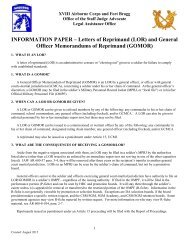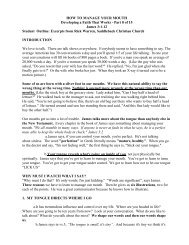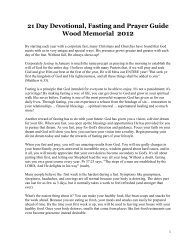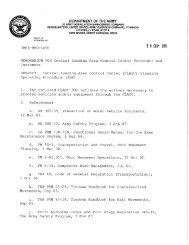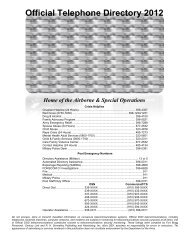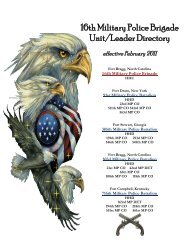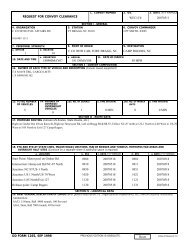Articles 120, 120b, 120c, 43, and 118, UCMJ – DoD Proposed ...
Articles 120, 120b, 120c, 43, and 118, UCMJ – DoD Proposed ...
Articles 120, 120b, 120c, 43, and 118, UCMJ – DoD Proposed ...
You also want an ePaper? Increase the reach of your titles
YUMPU automatically turns print PDFs into web optimized ePapers that Google loves.
<strong>Articles</strong> <strong>120</strong>, <strong>120</strong>b, <strong>120</strong>c, <strong>43</strong>, <strong>and</strong> <strong>118</strong>, <strong>UCMJ</strong> <strong>–</strong> <strong>DoD</strong> <strong>Proposed</strong> NDAA FY 11 Amendments, as<br />
included in S. 3454 by Senate Armed Services Committee, June 4, 2010<br />
(A) the intentional touching, or causing another person to touch, either<br />
directly or through the clothing, of the genitalia, anus, groin, breast, inner thigh,<br />
or buttocks of another any person, with an intent to abuse, humiliate or<br />
degrade any person; or<br />
(B) intentionally any touching, or causing another person to touch, either<br />
directly or through the clothing, the genitalia, anus, groin, breast, inner thigh, or<br />
buttocks any part of any person, if done with an intent to abuse, humiliate, or<br />
degrade any person or to arouse or gratify the sexual desire of any person.<br />
Touching may be accomplished by any part of the body.<br />
(3) BODILY HARM.—The term “bodily harm” means any offensive touching of<br />
another, however slight, including any nonconsensual sexual act or nonconsensual<br />
sexual contact.<br />
(3)(4) GRIEVOUS BODILY HARM.—The term ―grievous bodily harm‖ means serious<br />
bodily injury. It includes fractured or dislocated bones, deep cuts, torn members of the<br />
body, serious damage to internal organs, <strong>and</strong> other severe bodily injuries. It does not<br />
include minor injuries such as a black eye or a bloody nose. It is the same level of injury<br />
as in section 928 (article 128) of this chapter, <strong>and</strong> a lesser degree of injury than in section<br />
2246(4) of title 18.<br />
(4) DANGEROUS WEAPON OR OBJECT.—The term ―dangerous weapon or object‖<br />
means—<br />
(A) any firearm, loaded or not, <strong>and</strong> whether operable or not;<br />
(B) any other weapon, device, instrument, material, or substance, whether<br />
animate or inanimate, that in the manner it is used, or is intended to be used, is<br />
known to be capable of producing death or grievous bodily harm; or<br />
(C) any object fashioned or utilized in such a manner as to lead the victim<br />
under the circumstances to reasonably believe it to be capable of producing death<br />
or grievous bodily harm.<br />
(5) FORCE.—The term ―force‖ means action to compel submission of another or<br />
to overcome or prevent another's resistance by—<br />
(A) the use or display of a dangerous weapon or object;<br />
(B) the suggestion of possession of a dangerous weapon or object that is<br />
used in a manner to cause another to believe it is a dangerous weapon or object; or<br />
(C) physical violence, strength, power, or restraint applied to another<br />
person, sufficient that the other person could not avoid or escape the sexual<br />
conduct.<br />
(B) the use of such physical strength or violence as is sufficient to<br />
overcome, restrain, or injure a person; or<br />
(C) inflicting physical harm sufficient to coerce or compel submission<br />
by the victim.<br />
(6) UNLAWFUL FORCE.— The term “unlawful force” means an act of force<br />
done without legal justification or excuse.



